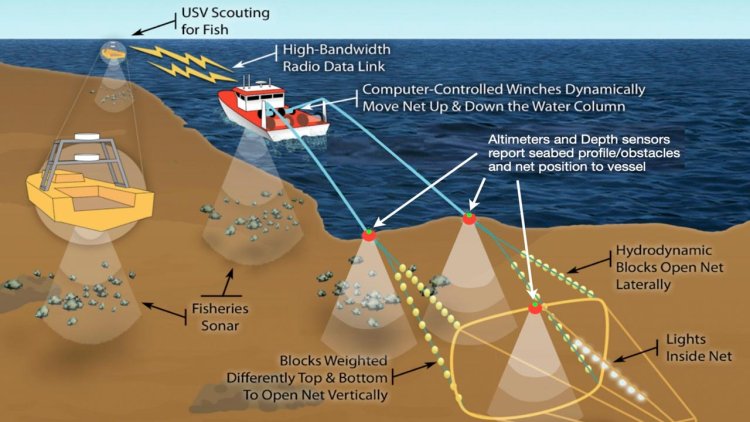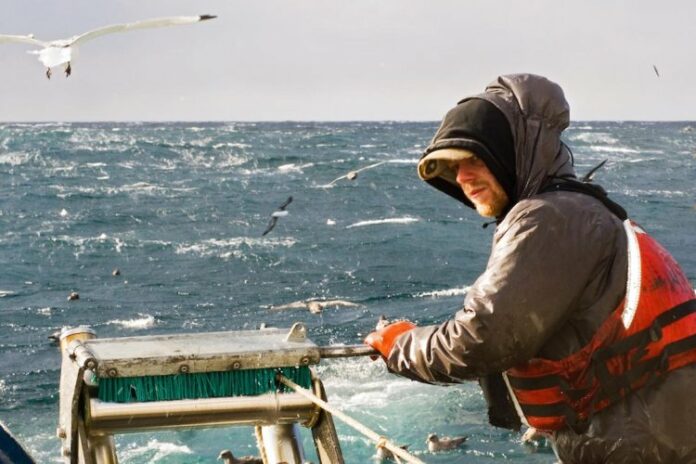The negative effects of bottom trawling on not only marine environments but local economies and societies have been the focus of several recent studies, with certain NGOs calling for a stop to the practice altogether.
Despite supplying a quarter of the world’s seafood, fishing via bottom trawling has sparked a longstanding debate on its impacts, including its potential harmful effects on deepwater ecosystems and the levels of carbon emissions it generates. In addition to NGOs requesting a complete elimination of the practice, there were calls in 2022 for bottom trawling to be replaced in the E.U. with less impactful fishing gear.
A Canadian startup is trying to find a middle ground, in which bottom trawling can continue while limiting the practice’s negative impacts on critical seabed environments.
“I don’t think it should be [viewed] as negative as it is. Fishers in general are very concerned about the sustainability of their industry, but they just don’t have the tools that allow them to fish it differently,” Angie Greene, the CFO of Halifax, Nova Scotia, Canada-based startup Katchi, said. “They just get tighter and tighter regulations without anything to help do it differently. Our solution, I feel, bridges the gap between both initiatives [ensuring environmental sustainability while protecting fishers’ livelihoods] and helps them to work together.”
Katchi’s solution is bottom-trawling equipment it pioneered that is designed to reduce fuel consumption, minimize equipment damage, and preserve sensitive seafloor environments.
The idea for such a project started with Katchi Founder and CEO Marc d’Entremont, who envisioned a fish-harvesting system that eliminates or at least minimizes disturbance to the ocean floor while enhancing commercial catch efficiency, thereby cutting costs for fishermen.

With support from Halifax-based Dalhousie University, funding from Canada’s Ocean Supercluster, and collaboration with other partners, the system is set for commercial release in 2024.
“[On traditional vessels], there are currently two huge trawl doors situated in the trawl system that frequently have to be brought to the welding shop for repairs, and then, thousands of dollars later, they get reinstalled on the vessel, and you can go out again. It delays your trip. It’s expensive, and sometimes, trawlers can lose most of their net system due to snagging the bottom [of the ocean],” Greene said. “[Katchi’s system] is going to reduce the impact of expenses like maintenance and fuel consumption because you are no longer touching the seafloor, and on the environmental side, it reduces bycatch.”
The fully integrated solution SmartNet uses hydrodynamic blocks on the top and bottom of the net to ensure the net remains open, replacing existing trawl doors and reducing fuel consumption/GHG. The vessel’s depth sounder maps the seabed in advance of the net and communicates with the winches to automatically adjust cable payout. This enables the net to move up and down the water column to the desired depth specified by the fishers. The system also ensures that the net does not come in contact with the seabed and instead remains close by hugging bottom contours features and avoiding obstacles.
Canadian designed and manufactured USVs, with innovative energy optimization technology, will scout for fish using hydroacoustic equipment that delivers information to vessels to reduce vessel search time. Lights and bioacoustics will be used to ensure efficient capture of targeted species while simultaneously reducing by-catch. The system will be tested on the MV Lery Charles, owned and operated by Scotia Harvest Inc.
With a total project value of nearly $3.3 million, the Ocean Supercluster will provide close to $1.6 million towards the project with the balance coming from project partners.
This project encourages technology development and manufacturing in Atlantic Canada. Specifically, the adoption of this technology aims at increasing the profitability of the fishing industry which already feeds spin-off industries mainly located in rural communities throughout the region. This project is expected to directly create 19 new jobs over the course of the next two years.
Source: SeafoodSource, Katchi



